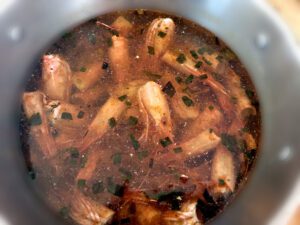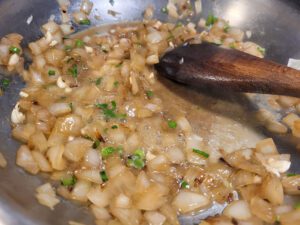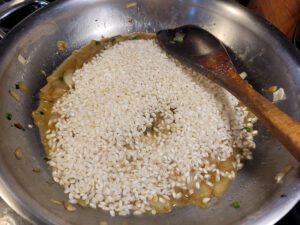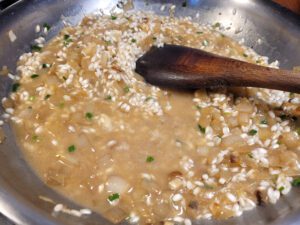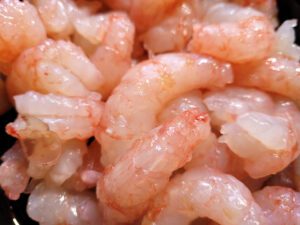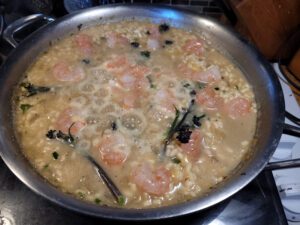
If you find a recipe in a regional cookbook that calls for a specific crustacean, don’t give up simply because you aren’t able to source it locally. “But the recipe calls for Dublin Prawns (or Cowichan Bay Spot Prawns, etc)!”
If you are in Louisiana, of course, it matters a lot what you use in a crawfish boil. But, if you live 600 miles inland and you can get fresh shellfish or even reasonably good frozen shellfish, your options are going to be limited. Substitution is not only okay, I encourage it.
This recipe for crawfish bisque was originally intended to be a Lobster Bisque, based on a dish I had in Halifax at Cafe Chianti. Crawfish were used because that’s what I had available that day. You should also use the best crustacean available to you.
“Spot the prawn…or is it a shrimp? What are the differences, and does it matter to what I’m cooking?”
Dublin prawns are actually a type of crawfish, and look like miniature lobster, but you could replace them in a recipe with large shrimp, or a freshwater crustacean. I’m more concerned with freshness and quality of supply available than of having the specific item. If I am that determined, I’ll go to where the food comes from to try it.
“But aren’t they completely different animals?”
Yes and no. Yes, from a biological perspective, but less so in cuisine. While a lobster and shrimp Romeo and Juliet are impossible as lovers/breeding companions, as ingredients they are often interchangeable. Point of origin plays easily as large a role in flavor as specific species does. Whatever shrimp-like creature you are talking about, whether it is a cold water inhabitant, or from warmer climates, whether it is from fresh water or brackish water, environmental issues play a large role in flavour.
There are flavor and texture differences between species of course, some great, some subtle. But there can also be differences in flavor within a given species of shrimp caught in different bodies of water. Overall though, the general flavor and texture remain reasonably constant for the purposes of substitution if you are not vying for a Michelin star.
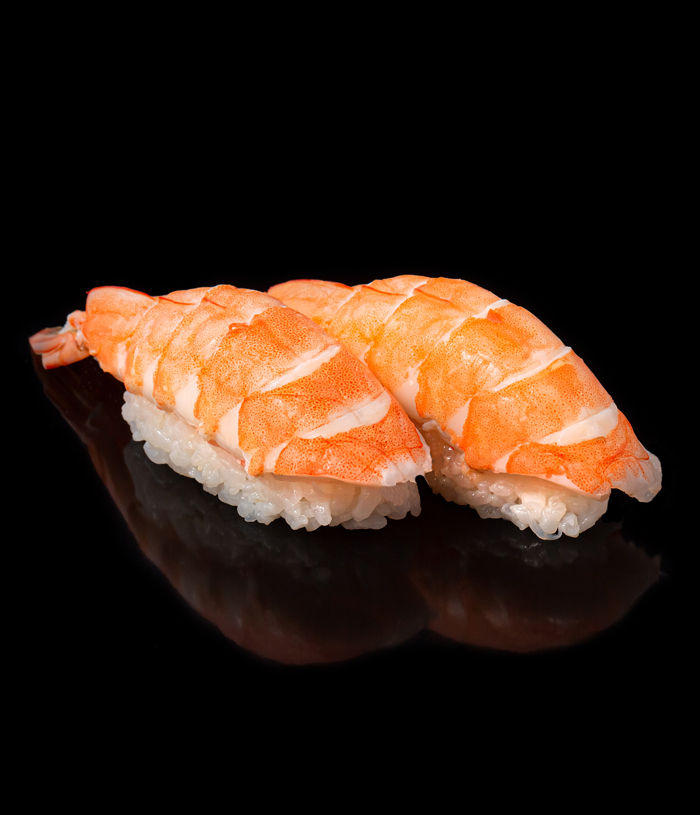
“But I want True Prawns!”
I understand. We all want authenticity. In most places with active supply chains, you can find it if you really want, for a price. For the most part though, whether you find it labeled as prawn or shrimp, it’s largely a common name with no real scientific meaning. I kind of knew this from having grown up in the fishing industry, but while researching this article, the fact kept asserting itself in the contradicting information in articles.
“The terms shrimp and prawn have no definite reference to any known taxonomic groups. Although the term shrimp is sometimes applied to smaller species, while prawn is more often used for larger forms, there is no clear distinction between both terms and their usage is often confused or even reverse in different countries or regions.”
Tin Yam Chan
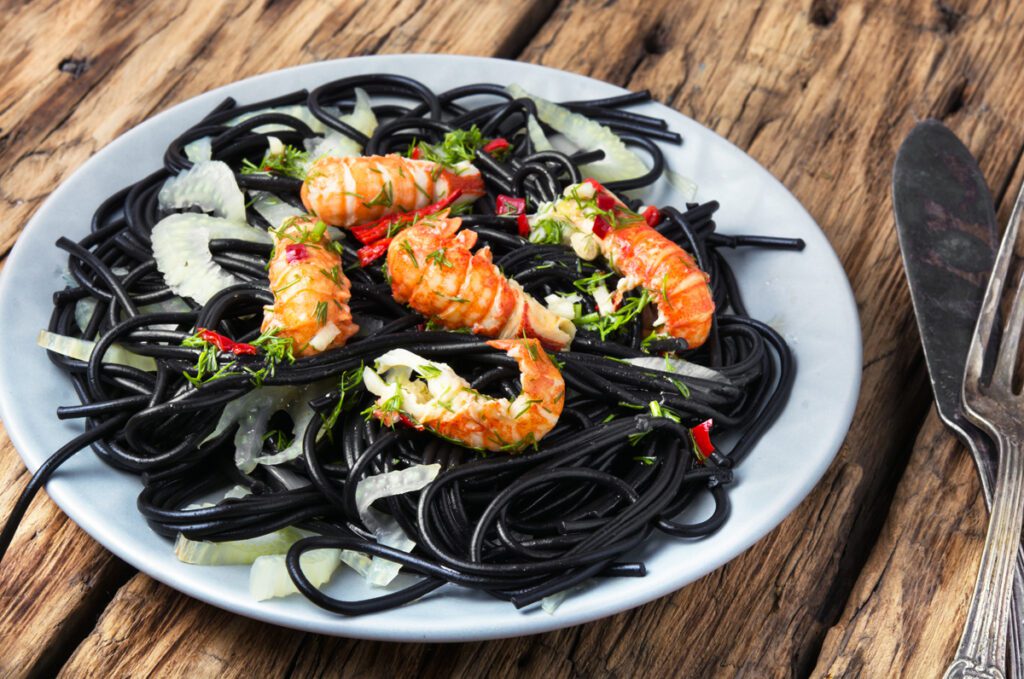
While in the process of drawing that conclusion, I came across this Wikipedia article referencing Tin Yam Chan, a crustacean taxonomist in the research article “The Living Marine Resources of the Western Central Pacific“. It is a dense read, but it is authoritative. In his words: “The terms shrimp and prawn have no definite reference to any known taxonomic groups. Although the term shrimp is sometimes applied to smaller species, while prawn is more often used for larger forms, there is no clear distinction between both terms and their usage is often confused or even reverse in different countries or regions.”
Essentially, there is so much variation within the classes of prawns and shrimp that it might even be reasonable to say that neither truly exists as a specific definable class. That these are merely convenient common names for a broad range of species that have mainly cosmetic similarities and differences.
The point is that, one region’s prawn is another region’s shrimp.
There are a lot of species of Shrimp, those we call Prawns, are generally of the largest varieties. There are many species of these decapods, and they have minor differences in appearance and flavor, but generally suit the same recipes.
One of my favorite dishes many years ago at The Breadline, a restaurant that used to exist in Vancouver’s Gastown, was a dish with prawns proudly labeled as scampi, which I remember my mother commenting about at the time. They were gigantic, so I suppose the restaurant reasoned they were as good as scampi, and I was happy because they were delicious, but they looked nothing like a small lobster, as crawfish species tend to do. It was a difference of species that truly mattered however in a legal sense, as culinary fraud. I enjoyed the restaurant and prefer to think that this was accidental.
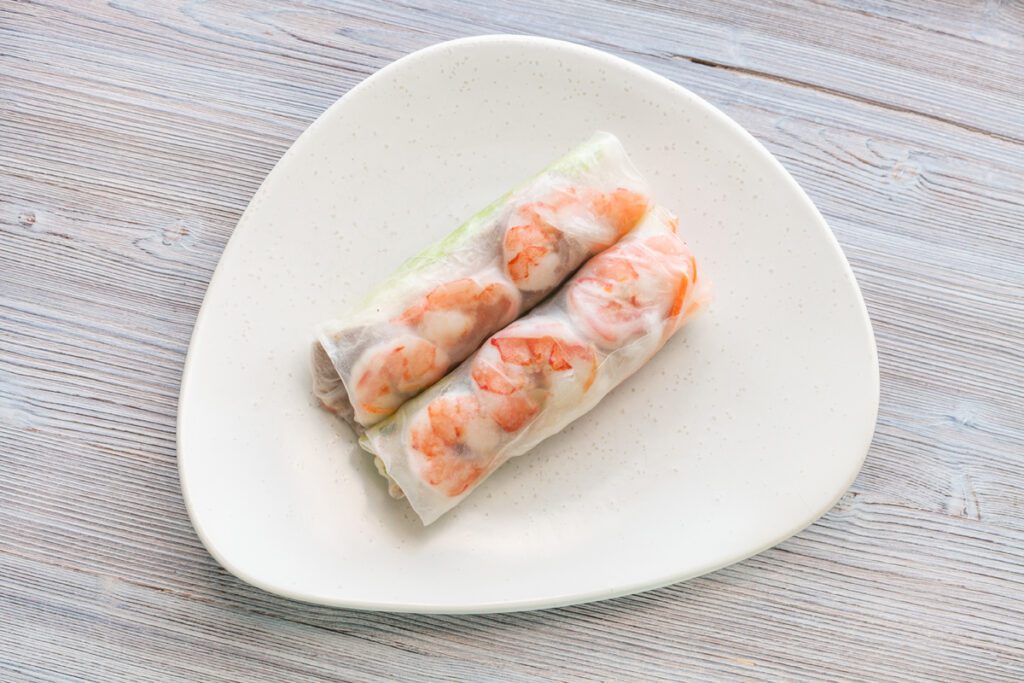
Variations on a theme
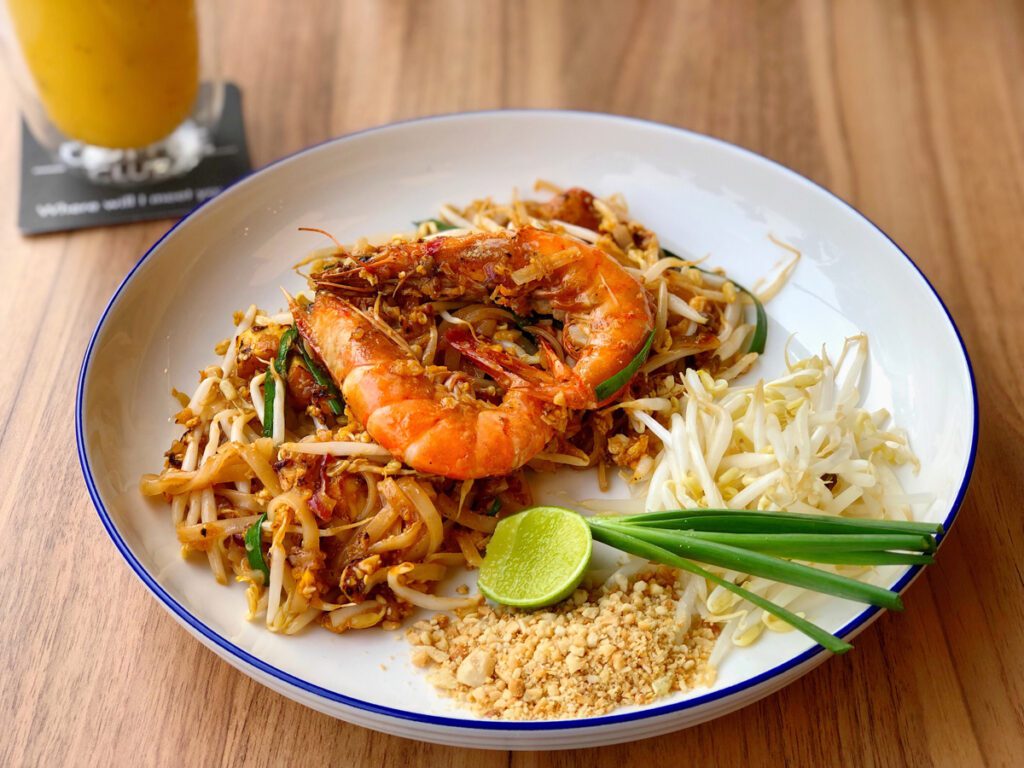
Of course, these species all have a different actual flavour, but most types of crustaceans have a somewhat similar character, crab being a bit of an outlier. King prawns, freshwater prawns, big lobster, small lobster, and most species of shrimp have similar texture and flavour profiles.
There are differences, but not as broad as those between (for example) lamb and pork. While some may be sweeter or richer, or firmer in texture, the biggest flavour shifts come from size and regional conditions. Salt water vs fresh water, local minerals, the diet of the crustaceans, all of these play a role in flavor, as does freshness.
Local conditions and impact on flavor
The diet and living conditions of the shellfish, no matter what the species is, will have a big impact on flavour. Shellfish from warmer waters tend to be larger, while colder waters tend to produce firmer meats and smaller animals. The main difference between the flavour of shrimp vs prawns or crawfish is caused by conditions in the bodies of water they come from. Freshwater shrimp will taste different from shrimp caught in salt water, but whether it has longer legs, or the largest pincers, is irrelevant, they are similar creatures with similar nutritional profiles, textures, and flavours.
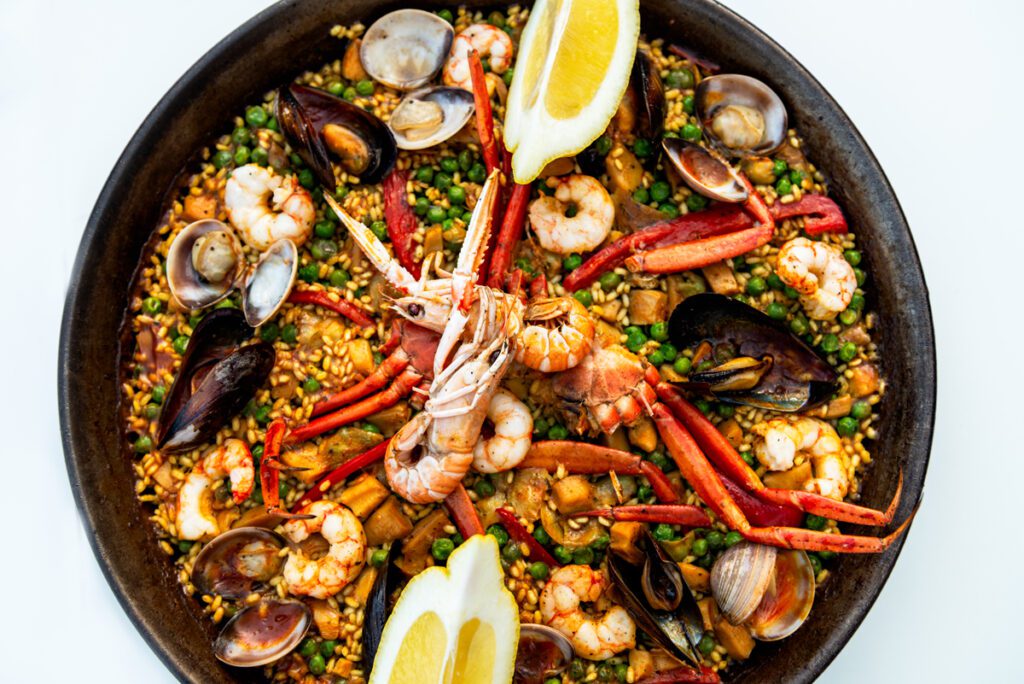
Rock lobster, spiny lobster, crawfish, and my personal favourite, crawdads, are all regional names for various crayfish species, most of which are found in freshwater. Crawfish have a hard exoskeleton and feather-like gills. As you may have guessed from some of the regional names for them, most species of crayfish tend to look a lot like miniature lobsters. Crawfish species are abundant throughout North America, with over 300 species in the United States alone. They are also found in New Zealand and Northern Australia, with smaller populations in South-eastern Africa, South Africa, Southern China, and East Asia.
It all depends on your purpose

From the perspective of species there are significant differences among all of these creatures. As species, decapod edible crustaceans are as similar, and yet as different, as lemons, limes, or pomelos, and oranges.
From a culinary perspective however, they are as similar as Seville, Mandarin, Valencia, or Blood oranges. Somewhat different tastes, but can often be used interchangeably.
What matters is that you have a suitable ingredient for your dish, whether it’s risotto, bisque, seafood cocktails, or paella. In the kitchen, the specific seafood products matter less than the meal they are in and the freshness of the catch. When one lives in a large cosmopolitan city with imports coming in from everywhere, one can easily get obsessed with a specific ingredient. But these details are often less important than we sometimes allow them to be.
A world of variety
It’s easy to forget that most parts of the world that have bodies of water are home to one or more types of crustaceans, and they simply eat the ones they have locally. which are a much more diverse group of creatures than appears to be the case at first glance.
One thing that is consistent among the vast majority of shrimp and other small crustaceans, whether its the largest prawns, or a small lobster, is that they are delicious. It’s kind of irrelevant at the end of the day if the seafood you use is part of the dendrobranchiata suborder, or the pleocyemata suborder.

100% Delicious

Most of this class of shellfish benefits from similar types of cooking and sauces. That scampi, aka Dublin Bay Prawn, won’t harm your Spanish Paella, Thai Curry, or Italian Risotto, and each dish will be equally good with Cowichan Bay Spot Prawns. Most of the world uses what’s local.
Here in Cowichan Bay, it’s Spot Prawn season and that’s what I’ll be using for this risotto, and paella, tapas, curry, and pasta.
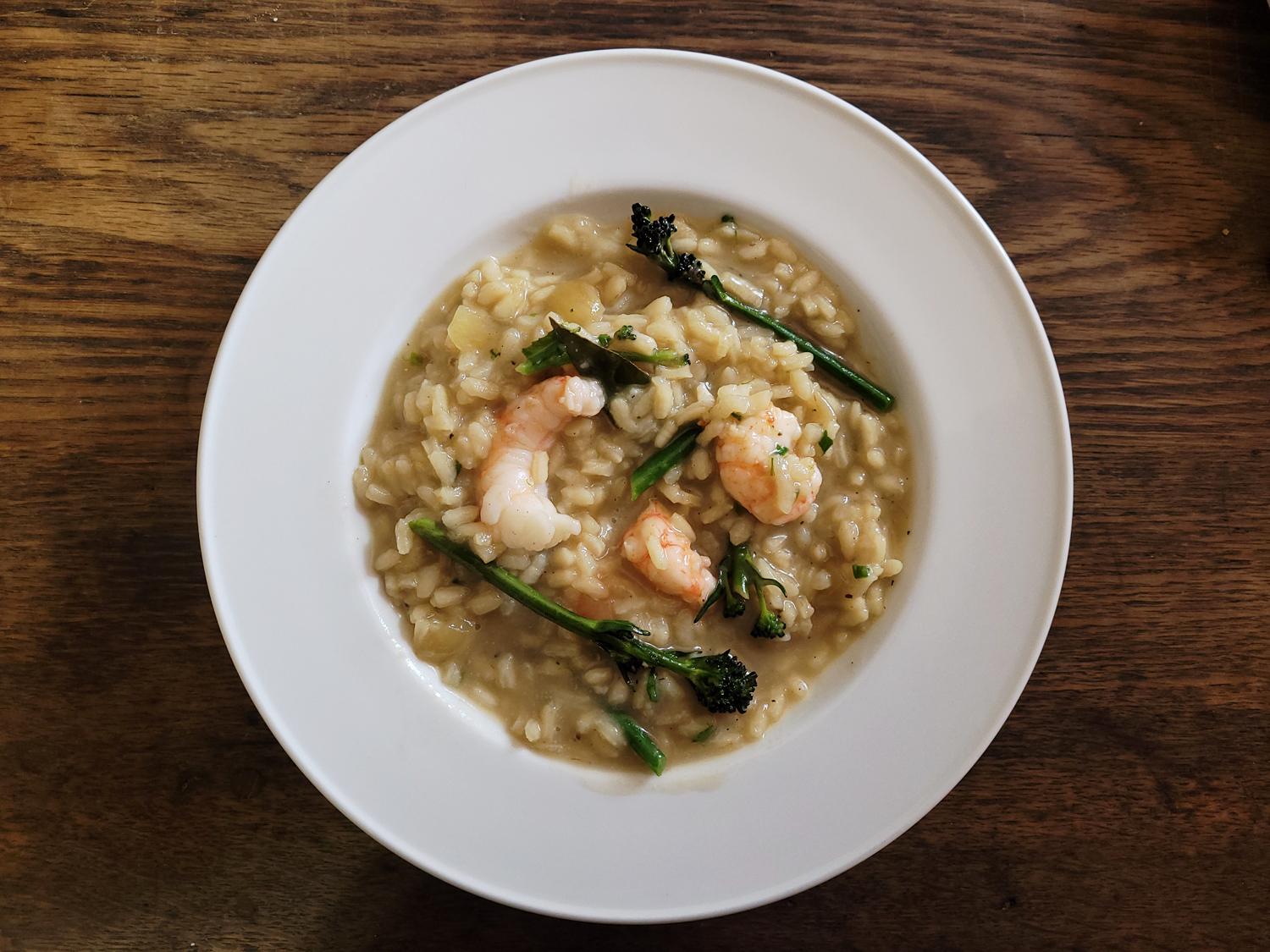
Ingredients
- 4 cups shrimp stock
- 1.5 cups Arborio rice or Carnaroli, or Vialone Nano
- 1.5 lbs shrimp Peeled and deveined
- 3 Tbsp butter
- 1 sweet onion chopped
- 3 cloves garlic
- 1 sprig thyme chopped (or 1 tsp dried)
- 1 tsp salt I use my olive salt, which you will see in the dry cured olives recipe
Instructions
- On medium heat, brown the onions in the butter, with salt
- When the onions are soft and beginning to turn golden, add the garlic and thyme
- When the garlic becomes fragrant, add the rice and stir it in so that it is coated with the butter. If the pan is dry, add 1/4 cup stock just before adding the rice
- When the rice has been thoroughly coated, slowly add the stock, ladling it in a cup at a time while stirring it gently into the rice
- After you have added half of the stock, start taking breaks after stirring the liquid in…you should stir frequently, but not constantly
- Simmer the risoto until the rice is soft but still has a bit of bite.
- After about 15 minutes, when the sauce has begun to form, add the broccoli and prawns.
- Cook these gently in the sauce, turning the prawns after a minute so that both sides cook evenly. Cook until the broccoli is soft and the prawns are bright pink.
- The risotto is done when it is al dente, a personal choice, but 25- 30 minutes should do it, although each rice variety will have its own unique timing.

